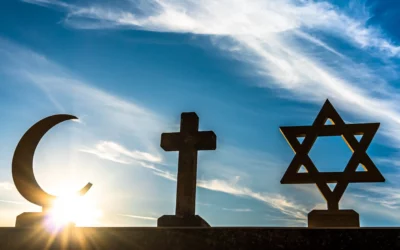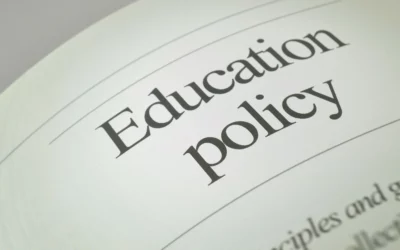
Written by Christine Cooke Fairbanks
November 3, 2020
“Public schools are not religion-free zones. Nor are they places where religion is transferred to the next generation,” says Eleesha Tucker, executive director of the Utah 3Rs Project, a project that seeks to train public school educators how to navigate the issues of diverse religious beliefs and religious liberty in the public classroom.
We live in a pluralistic society, where diversity in thought and belief are not only present but protected by our nation’s laws. Public school is often a place where students experience pluralism and learn (or ought to be learning) how to become informed and active participants in the world in which they live.
Still, trying to understand how those realities play out in the public square – or in this case, the public school classroom – can leave educators with questions.
To learn more about how these issues might affect Utah educators, students and families, we spoke with Eleesha Tucker about her work in the state.
Christine Cooke, education policy fellow at Sutherland Institute: What kind of work does the Utah 3Rs Project do?
Tucker: The Utah 3Rs Project promotes understanding of: (1) religious liberty, the freedom to believe or not believe, as an inalienable right of every person, (2) the religion clauses of the First Amendment as the guides for living with our deepest differences as an American society, (3) the responsibility of every citizen to protect the freedom of religion or belief of others, (4) religious diversity in American society as a civic good, and (5) civil dialogue as a skill of American citizenship
The project promotes the public’s understanding of the religion clauses in the U.S. Constitution and their relationship to public schools. We equip teachers and parents to prepare Utah students to apply the 3Rs—Rights, Responsibility, and Respect– to their citizenship in a modern pluralistic society, empowering them to wrestle productively with our deepest differences.

Tucker: The religion clauses of the First Amendment to the U.S. Constitution are the boldest and most successful part of the entire American experiment.
They protect the individual ways we act on our consciences. They guarantee the state will not require any particular expression of faith or penalize someone for their choice not to believe. They protect what it means to be fully human and the essence of what it means to be an American.
The impact of understanding the genius of the religion clauses of the First Amendment guides American citizens in how to engage with others in society, especially if others’ values systems clash with our own values. Our shared value system under the First Amendment means we understand that every American has the right of conscience and we have the responsibility to protect others’ rights, even if we disagree with their behavior.
In the words of Seamus Hassan, everyone has the “right to be wrong.” As we view fellow Americans in this lens, we can more productively navigate the public square together. We are not required to change our own beliefs or values, but we are required to seek understanding of the motivations of our fellow Americans and aim to engage in a healthy dialogue for the good of our country. We must productively wrestle in the public square to keep government by the people a reality.
Cooke: Why is it important for teachers and students to understand principles of religious liberty?
Tucker: Teachers play a crucial role in preparing young Americans to be good citizens who understand that correctly applying the principles of religious liberty is the key to finding common ground with our neighbors, despite our deepest differences with them. Teachers are charged with transmitting these principles to the next generation while instilling them with an unwavering commitment to the values of our constitutional republic.
As teachers are well equipped to transmit these principles, students understand their rights, feel a responsibility to protect the rights of others, and engage respectfully in civic discourse. We have a system of self-government, which means we are only ever one generation away from our country failing.
American public schools are microcosms of the larger American public square. In public schools, students learn the rules of engagement in American society, and the rulebook is the Constitution. As students properly understand the relationship between the First Amendment’s religion clauses and the public school, they will understand the proper relationship for religion in the American public square as they become adults.
Cooke: What problem are you trying to address? What are common misunderstandings or misperceptions you’re trying to address?
Tucker: The first problem we seek to address is a proper understanding of religion in the American public square. The second is a proper understanding of how to teach about religion in a public school setting.
The religion clauses of the First Amendment guarantee the American public square is a religiously robust space, and the public school is a microcosm of the American public square. Public schools are not religion-free zones. Nor are they places where religion is transferred to the next generation.
Americans often misunderstand the phrase “separation of church and state” to mean religion should be kept in only private spaces. The Establishment Clause requires the government, including public school educators, to be neutral toward religion and the Free Exercise Clause guarantees public expression of belief or no belief in the public square.
The Utah 3Rs Project aims to educate public school administrators and teachers on the law surrounding religion in the public school setting. This way, public school educators do not suppress the free exercise of students nor proselytize to their students.
The Utah 3Rs Project trains teachers in the proper way to teach about religion in the public school setting. In the year 2000, the National Council for the Social Studies (NCSS) joined 21 national organizations and the U.S. Department of Education to publish consensus guidelines about the constitutionality of religion in public schools. These were disseminated to every public school in the United States.
The Utah 3Rs Project uses these guidelines in their trainings for teachers. The project also instructs teachers in frameworks that deepen their religious literacy.
Cooke: How can Utah families and educators support the work that is being done?
Tucker: Together families can study the history of the development of the religion clauses of the First Amendment and stand up for the proper understanding of religion in the American public square and in public schools.
Utah Humanities funded the development of a Utah 3Rs Project lesson that families can use to study this history. It’s titled Framers’ Debates on Religion: The First Amendment and the Utah Constitution. In this online lesson, families will: (1) discover the religious diversity in early America that influenced the creation of the religion clauses of the First Amendment, (2) explore how the debates of the First Federal Congress shaped the text of the religion clauses of the First Amendment and examine the leading questions about the relationship between church and state considered by the First Federal Congress of 1789, and (3) investigate the Utah State Constitution for its provisions protecting the rights of conscience.
Lastly, public school educators can invite the Utah 3Rs Project for professional development training in legal literacy and religious literacy so they are better prepared to strengthen rising citizens to fully engage in American society.
To contact Eleesha Tucker, email her at etucker@Utah3Rs.org. To learn more about the Utah 3Rs Project, visit https://www.utah3rs.org/.
Read More
Looking at Supreme Court and religious freedom through the lens of the presidential campaign
Two constitutional issues highlight similarities and differences between the Biden and Trump administrations.
Education policy to consider during the 2024 election season
Here’s a look at what each presidential candidate is likely to focus on in education, given their track records and campaign platforms.
Ignoring the text of the Constitution is a mistake
A written Constitution is entirely superfluous if the document is simply meant to give the people what they want.


